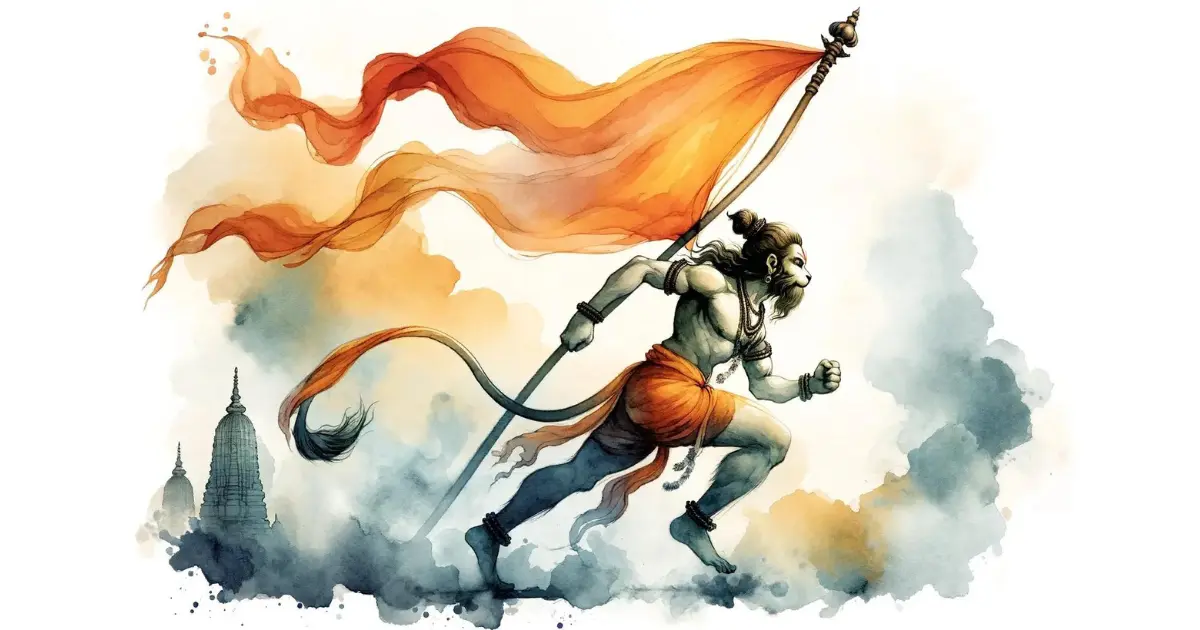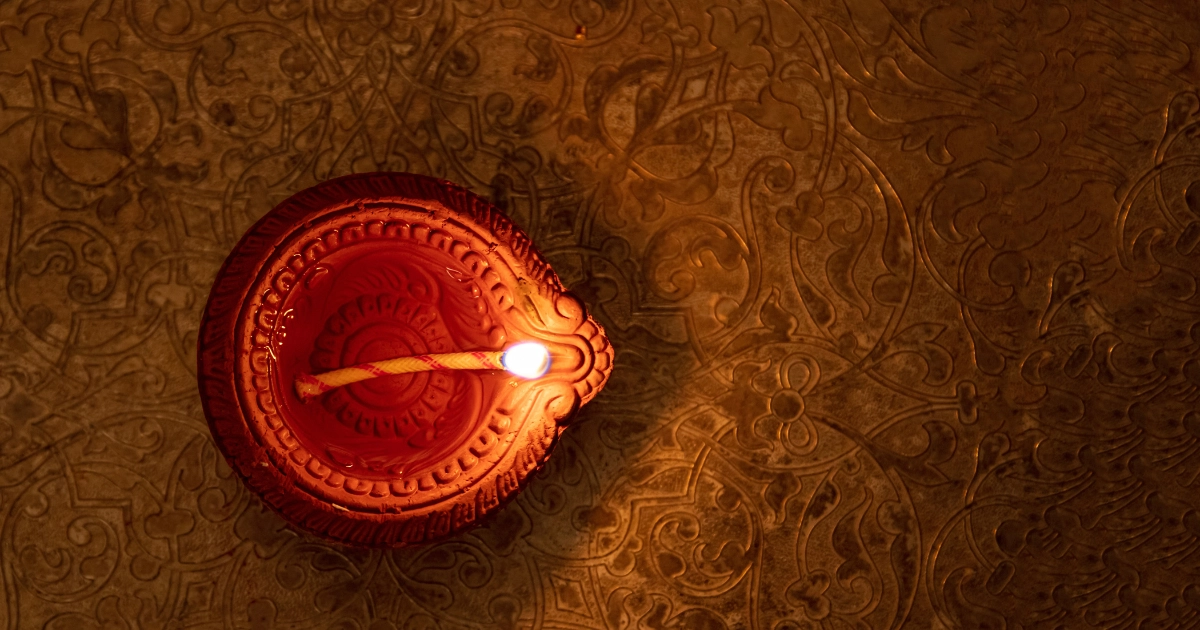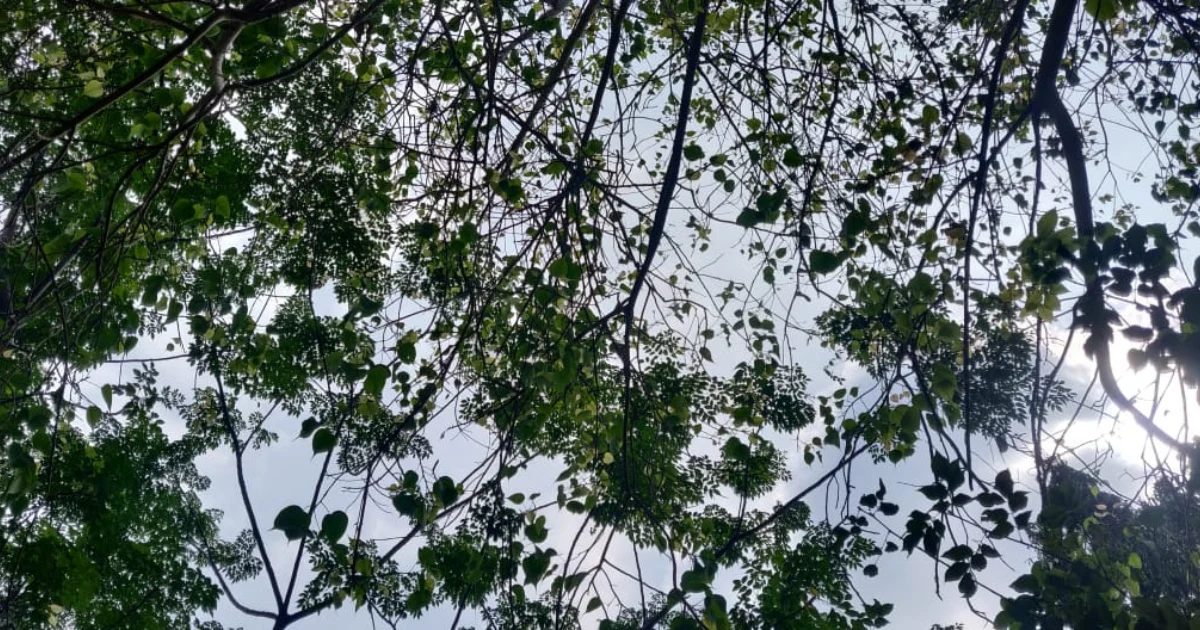As the car approached, bearing the Bhagvā flag with Hanuman ji flying proudly, people ran towards the gate breathlessly, from every floor in every building in our community. Lifts were jammed for a while and many eagerly impatient ones ran through the stairways, ready even to sprint down all thirteen floors.
I expected the crowd to hold more from the older generation, but children as young as one-year-olds were there, too. Every single age group was represented. Mothers were carrying toddlers in their arms. The Akshat distribution for the building of the grand Śrī Rāma temple in Ayodhya had begun.
The crowd grew as the chants of “Jai Śrī Rāma” sounded through the air. The kalaśa yātrā went around the entire society, and the crowds just kept growing. The Āratī was led by the eldest seniors within the society, and then of course everyone joined in. At first, Hindi bhajans dedicated to Śrī Rāma were playing; though as more joined, Telugu dedications were also played.
What was most heartening was that the youngest of the girls bore the Bhagvā flags with Hanuman ji, leading the entire group which followed them - after them young boys, and then everyone else. Folks were jostling to hold the majestic painting of Śrī Rāma in their own hands, but what was most surprising was that He was immediately treated as someone very special by everyone around. Something was felt by not only those who actually had the chance to hold Śrī Rāma’s citra, but also by those who simply looked upon it, for the King never arrives without his attendants and admirers.
This ancient yet powerful Rāma Cetanā that was lit decades ago, in the most impoverished, poorest and most underprivileged sections of the society, rose like a lightning bolt. This Caitanya has now reached every nook and corner of Bhāratavarṣa.
For there was a time when the elites of India thought of building a hospital in place of the Rāma temple, if they were not arguing directly for the Babri Masjid. At that time, most of the organizations, institutions and leaders of the country aspired for different paths, not one of which led to Śrī Rama. It was a time when the educated had a bouquet of opinions on what to do with Śrī Rāma temple, not one of them recommending the reconstruction of the mandir.
One would think that a country whose elites have abandoned its culture is unquestionably doomed. And one would not be very wrong in thinking so.
But something else stirs in the veins of this sacred land; some other prāṇa flows through Bhāratavarṣa; some other cetanā invigorates Sanātana dharma.
For at a time when we, the Hindus, were abandoned by almost all capable leadership, Śrī Rāma Cetanā rose from below, from the very bottom of this country. It came from the bottom-up, with a force unparalleled in the history of the nation. Some of the least empowered and most illiterate individuals of this country rose up and held the flag of Śrī Rāma, ready to give up their lives and the lives of their children, too, for the cause of Śrīi Rāma.
I knew and met many of them, who had participated in the great Yajña that led to the destruction of the Babri Masjid in 1992. These were the most demonized men in the world. They didn’t even have the satisfaction of being called martyrs. Let alone getting money, fame, or power; they received hatred and ignominy and that too in namelessness. There was nothing in this world which they gained. They lost literally everything.
And in that great loss, they gained the greatest prize that can be: the love of Rājā Rāma. Their only prize, their only goal was to become humble servants of Lord Rāma, the Emperor of Ayodhya and the world.
It was a breed produced not just once by this country. The soil of this country kept producing generations after generations of these servants of the Lord. While our enemies targeted, destroyed and overtook our elites, they could never imagine that the resistance would rise from some of the most powerless sections of the society. But such is Rāma Cetanā. It rose exactly from there.
I say I know many of them, for these men and women were around me everywhere. Illiterate, and scarcely ever having pursued higher education or knowing any English, they were almost a type: dark skinned, malnourished, underweight, reticent and speaking only in dialects and not even Manaka or standard Hindi. They were the object of absolute scorn by our ‘educated elites’, and they were thought of as a boogeyman for almost all outsiders. Many of the women were mothers and would bring their toddlers with them to rallies, tying them on their backs.
How can a movement lose, which is fueled by mothers who take their newborns to a rally?
It was these powerless, illiterate men and women in millions, who rose up and tore apart all resistance which stood between them and the reconstruction of a grand Śrī Rāma temple. It was this Rāma Cetanā which rose from the lowest rungs and dungeons of Hindu society, which reverberated through the entire length and breadth of this country, and like a tsunami swept away any and all resistance which attempted to stand in its path.
Yes, there were leaders like Advani and many others of the VHP. Yet, they themselves were only standing upon and working from a strong sentiment which was already present and had existed long before them. They also gave it all, but they were simply riding, surfing on a wave - one which rose from far below them and extended far beyond them. It was the wave of Śrī Rāma Cetanā, arising from the most unexpected of quarters, piggybacking on some of the most unexpected shoulders.
For doesn’t Śrī Rāma ride on the shoulders of Vīra Hanuman? That same Hanuman whom yes, if you are delusional, you would only see as a small incapable monkey. Yet that same Gambhīra Hanuman who is the very deva of śvāsa, the deity of breath, on whose shoulders Śrī Rāma is carried, and through Him the entire cosmos also.
This is what this Movement is built upon: shuddha Śrī Rāma Cetanā!
The battle for Sanātana dharma, the battle for Hindu dharma, the battle for Bhāratavarṣa began - not in the spaces of academia, the media, the judiciary, or the Parliament of this country.
The battle for Sanātana dharma, the rise of Śrī Rāma Cetanā began in the hearts of the śuddha bhaktas of Śrī Rāma. And that’s why we will win. That’s why one day, this Rāma Cetanā will storm all castles which are now held by our enemies - whether it be academia, media, judiciary, or the Parliament - and one day there will really be Rāma Rājya in this country.
There is not an iota of doubt about it.
Jai Śrī Rāma!







